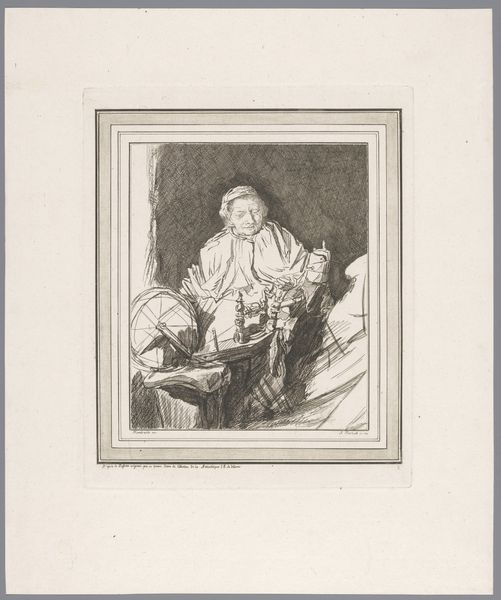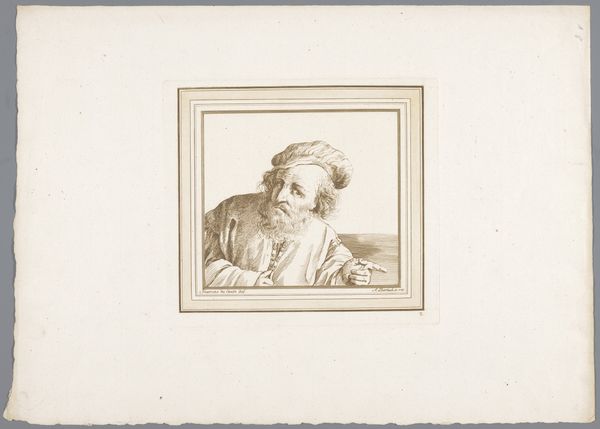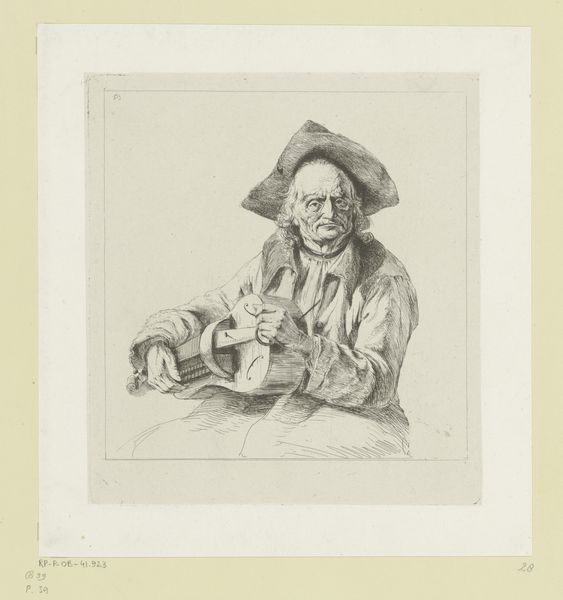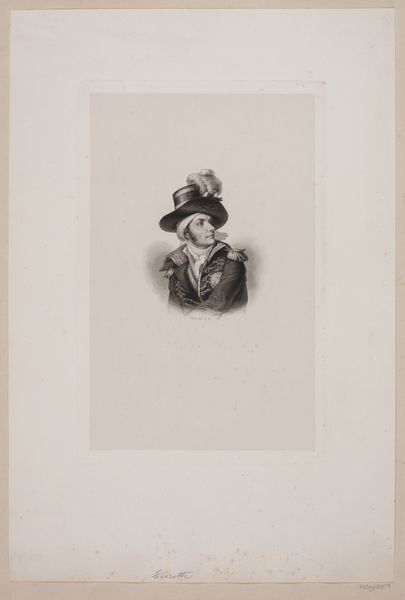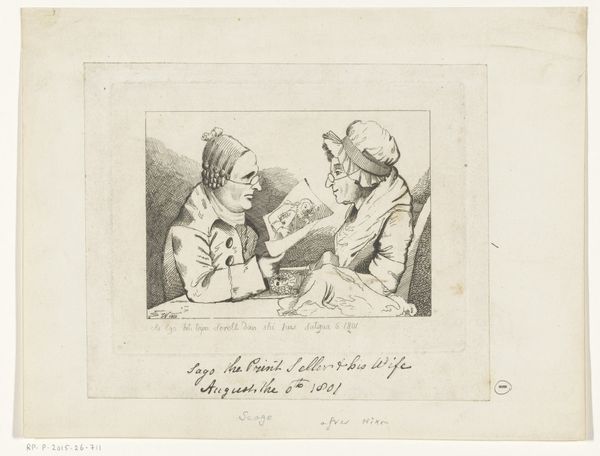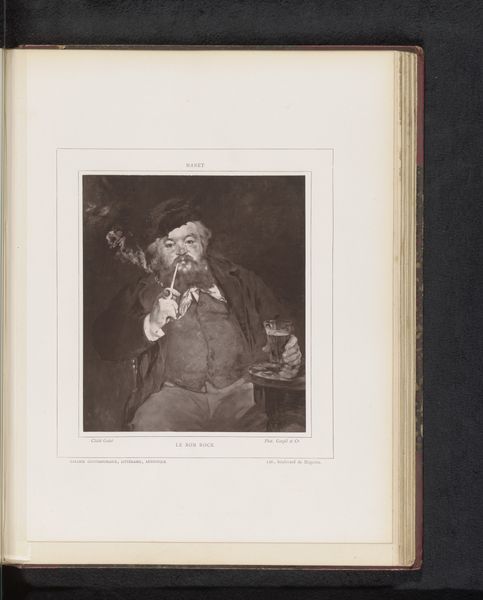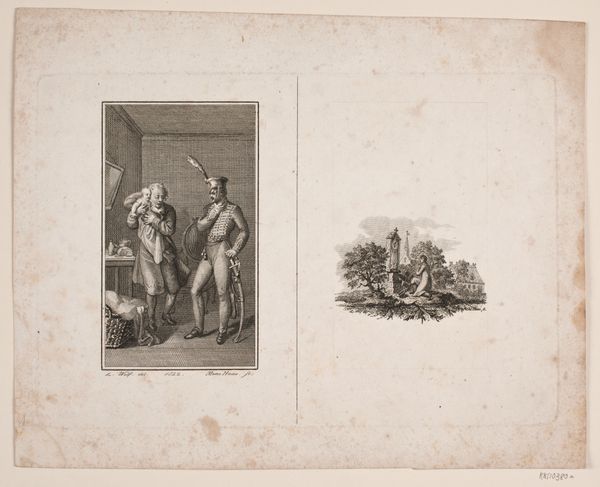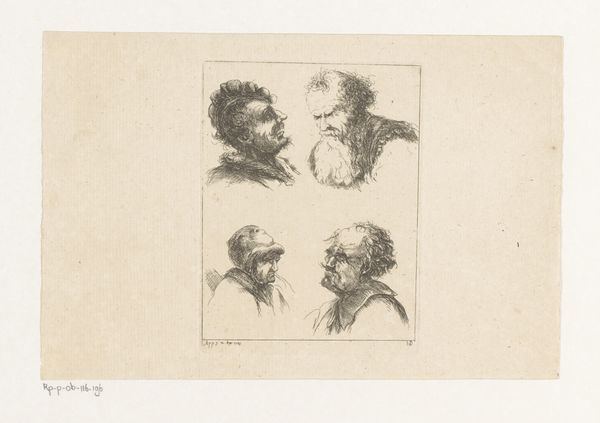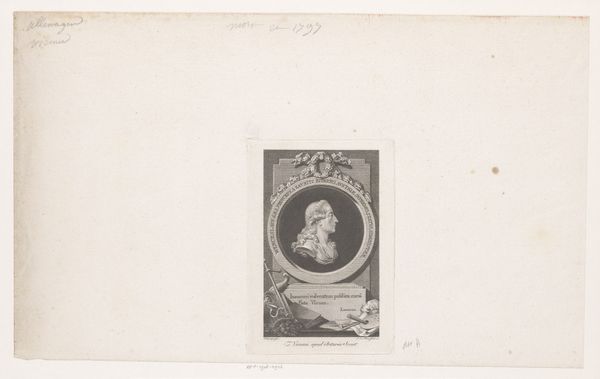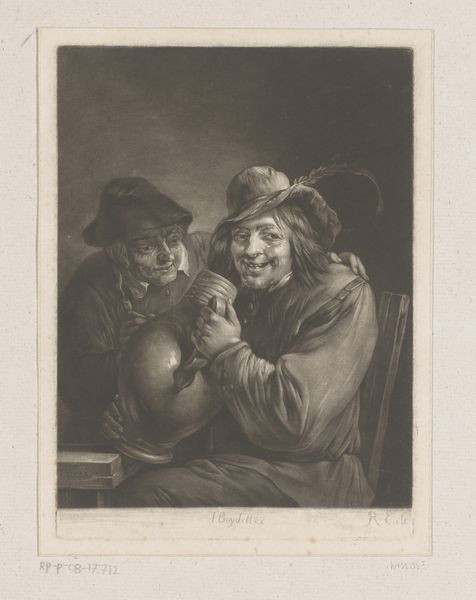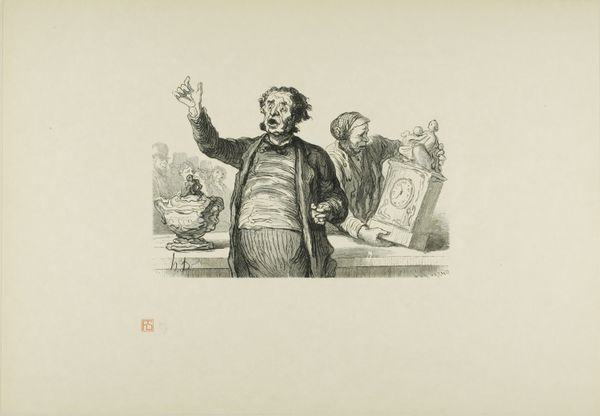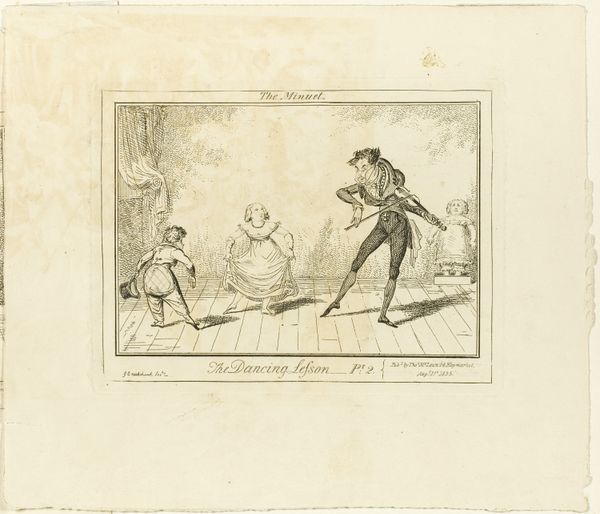
drawing, graphic-art, print, paper, ink, graphite
portrait
drawing
graphic-art
caricature
paper
ink
graphite
Dimensions: 113 × 169 mm
Copyright: Public Domain
Curator: Here we have "Two Bust-length Caricatures," a print made by Robert Dighton. It appears to be created with graphite and ink on paper. What's your first take? Editor: They’re so gleeful! Look at the lines around their eyes and mouths, crinkled with laughter. There’s an unapologetic mirth in these faces that seems to celebrate the ridiculousness of social pretense. Curator: Absolutely, and I think Dighton really understands how to use the materials here to create that feeling. The paper, probably mass-produced, already situates this artwork in a particular kind of marketplace. The choice of ink and graphite likely sped up his process for increased output. Editor: True. I see how the reproducibility factors into the artwork's reach, making satire more accessible to the rising middle classes, which could also promote discourse about societal issues like class, identity, and individual behavior. It invites viewers from different social standings to participate in the joke. Curator: And it also puts Dighton in a specific role within the production of imagery. These aren't traditional oil paintings meant for the wealthy elite; he’s churning out affordable prints. Editor: What does it mean when we exaggerate traits, lampoon fashion, and amplify social signifiers, especially through caricatures like this? It seems a very strategic method of revealing those societal structures we are all complicit in. I wonder if the subjects of the prints saw it this way too! Curator: It does seem we're invited to reflect on what is being presented here, and on the presentation itself as well. Editor: Definitely something to chew on – the act of representing is itself a political one! Thank you, Robert Dighton, for making me think about both material culture and social issues. Curator: Indeed. By examining Dighton’s print, we can see how even seemingly simple images reveal intricate details about historical production, dissemination, and the ways we laugh at, and sometimes challenge, one another.
Comments
No comments
Be the first to comment and join the conversation on the ultimate creative platform.
